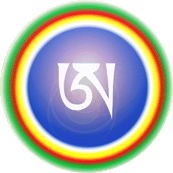Introduction to Dream Yoga,
Dream yoga goes beyond the practice of lucid dreaming. It is a discipline where practitioners train their body and mind with the aim of unifying these together, and ultimately achieving enlightenment.
Dream yoga has been practiced as part of Hinduism, at the very least since the Yoga Sutras were written down by Patanjali around 200 BCE. Tibetan dream yoga developed out of these beginnings slightly later and has been used by Buddhist monks for the last thousand years.
Many schools direct their followers to contemplate the comparison between the waking world and the dream world, it should be understood that both are illusions and both are subject to constant change.
Achieving lucidity is seem as an important first step in integration with the dreamworld, taking control of it, transforming its contents, to allow; first the realisation of oneness with the dreamworld and then to use the understanding and control to further their practices on the path to enlightenment.
The understanding that the dreamer is not limited to his dream body, but is the whole of the dreamworld is an easier realisation that the same is also true in the waking world. The dreamer can move forward on their path by learning to first dissolve their dream body, and later the entire dream state into a purer form of awareness in conscious, dreamless sleep known as Yoga Nidra.
By accepting that all waking life is also a dream, and developing the control to keep this thought in mind at all times also helps practitioners of dream yoga to weaken and ultimately release their attachments to the objects, peoples and events in their life. This releasing of these attachment is one of key tenets of Buddhism.
Technique for Dream Yoga
The technique described below by Namkhai Norbu, in his book; Dream Yoga and the Practice of Natural Light, is effectively an instruction for a Wake Induced Lucid Dream.

• Visualize and meditate on the Tibetan syllable “ah,” in the center of your body.
• Keep your awareness on it while you are falling asleep.
• Associate the visual letter with the sound “ahhh.”
• You will fall asleep with virtually full awareness.
• This will enable you to maintain awareness of the full presence of the state of natural light both while dreaming and while deeply asleep
Many dream yoga practices like this use a particular aural mantra, or visualised mandala as the focus of attention to keep the mind conscious while allowing the body to fall asleep.
One important difference between the dream yoga technique describes above, and a regular WILD is that it’s practice is not limited only to the time while you are falling asleep and attempting to initiate a WILD. Focusing your mind into a detached, heightened state of awareness in which you are conscious of all your sensory experiences without being absorbed by them should be maintained just as much while awake as when falling asleep.

